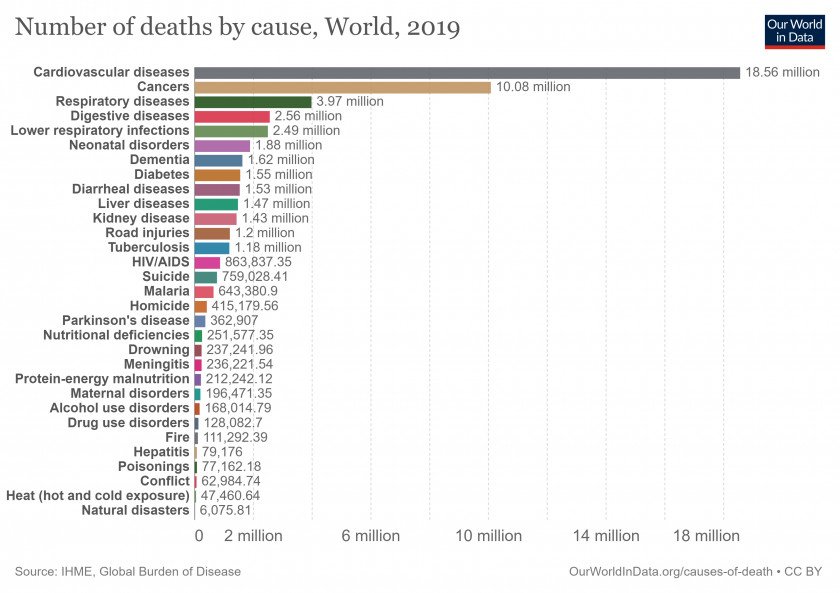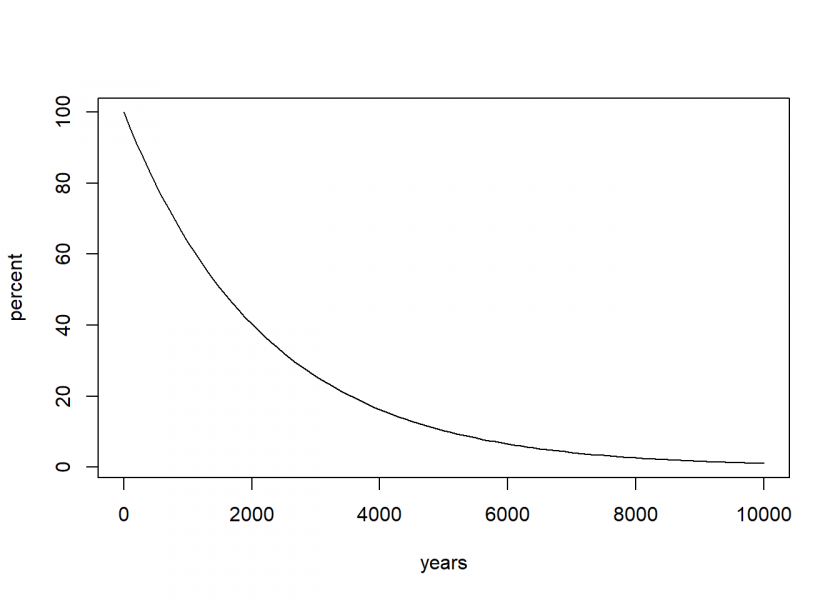
Imagine a world without diseases and no biological limit to how long you could live. Still, there could be accidents that kill you, murder, and suicides.
If you want to get an estimate of your life expectancy under those circumstances, read on!
Many people (me included) are afraid of certain diseases, especially cancer being a natural candidate for this. “If only we could beat cancer”, the thinking goes. Of course, there are many other diseases, cardiovascular diseases being the killer number one, or deadly infections as we all know just too well after two years of COVID!
Intuitively, many people think that if medical research were just advanced enough and could also reprogram the body so that it wouldn’t have to die, we would all live forever. Now, apart from the socioeconomic consequences, the question is: would this really be the case?
People don’t just die because of diseases but for many other reasons too. Let us have a look at the main causes of death:

To model life expectancy in this parallel universe, we just keep the causes of death that are not disease-related. It can of course be argued that in a world without disease literally “everything” would be different.
So, for any of the following causes, there could be different numbers in that radically new world, but the main point is that there will be “some” causes of death that still remain (as long as we do not have the possibility to upload ourselves into some virtual reality cloud).
There will still be fatal accidents and people will still have the ability to kill other people, or themselves. There will still be wars and conflicts (perhaps more than ever because of limited resources) and so on.
Going with rounded numbers as of 2019 we can model life expectancy with an exponential distribution:
world_pop <- 7700000000 accidents <- 1200000 suicide <- 800000 homicide <- 400000 nutritional <- 250000 drowning <- 250000 alcohol <- 170000 drugs <- 130000 fire <- 100000 poison <- 80000 conflict <- 60000 heatcold <- 50000 disaster <- 6000 death_prob <- (accidents + suicide + homicide + nutritional + drowning + alcohol + drugs + fire + poison + conflict + heatcold + disaster) / world_pop curve(exp(-death_prob * x) * 100, 1, 10000, xlab = "years", ylab = "percent")

The plot gives the percentage of the starting population that is still alive after x years. While there are some people that live many thousands of years the curve is quite steep, especially at the beginning, and most people are dead after about 10,000 years… which is a lot compared to our life expectancy today but a far cry from immortality!
Now, what is the average life expectancy?
1 / death_prob ## [1] 2202.517
“Only” about two thousand years, which is thirty times longer than today’s 73 years (about the same factor that humans live longer than small mammals e.g. mice), and in most cases ending with a violent death! I find gedankenexperiments like this quite illuminating. Obviously, even immortality doesn’t mean living forever.
UPDATE August 19, 2022
I created a video for this post (in German):

What does the curve look like when taking into account average birth rate?
nice post – btw I think remembering that in case of immortality PLUS no more diseases (b/c of scientific progress, etc) that number would be approx 200,000 years; that being the average number of years that you could evade a fatal/deadly type of accident
so again a big jump but still far from immortality 😉